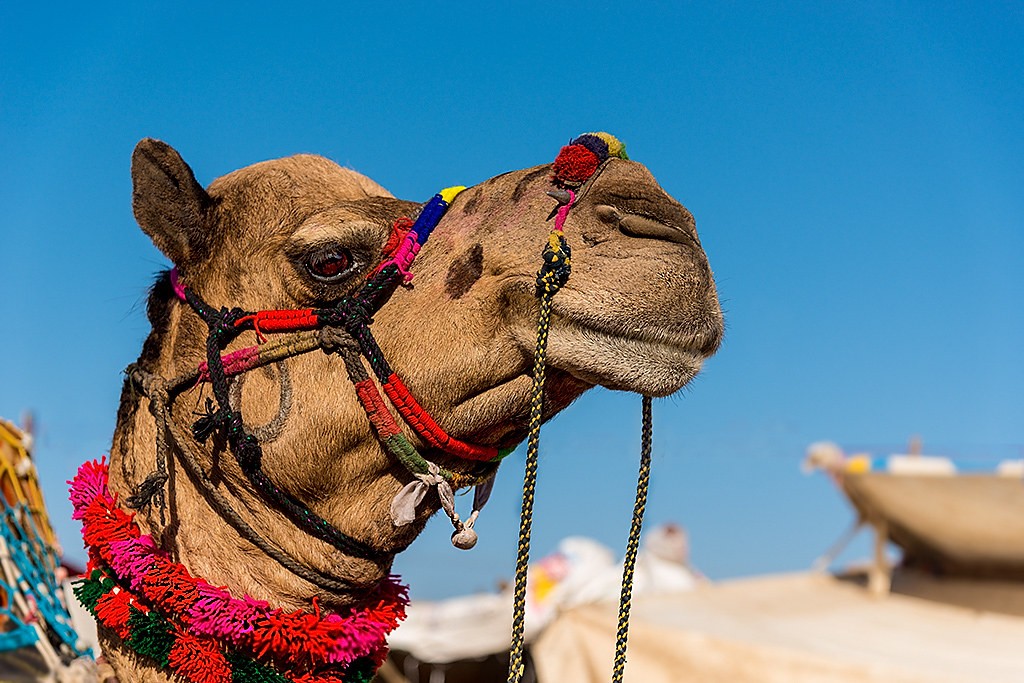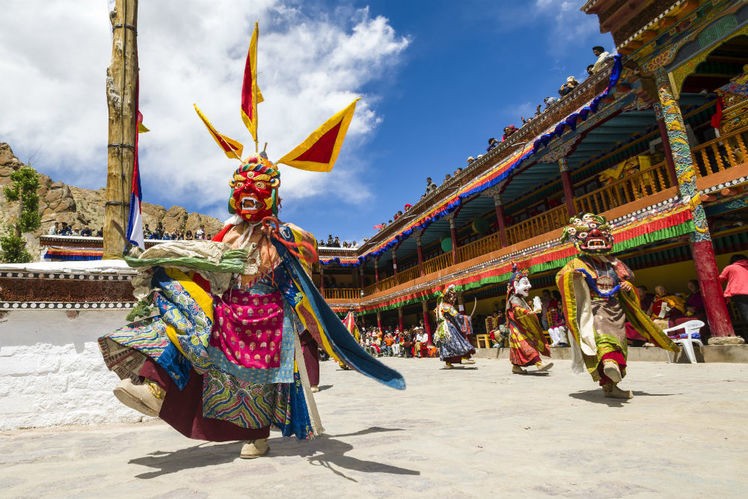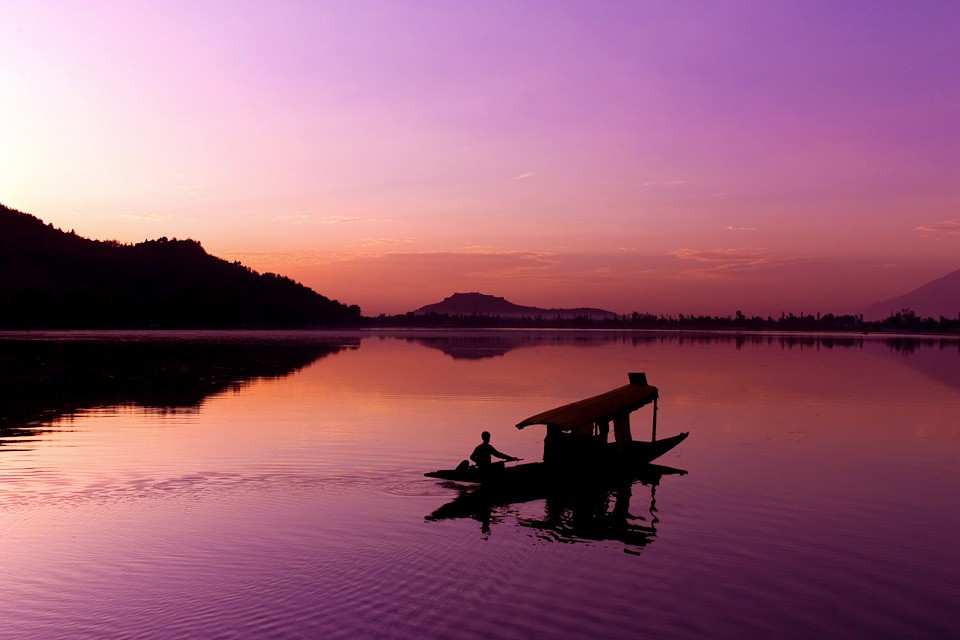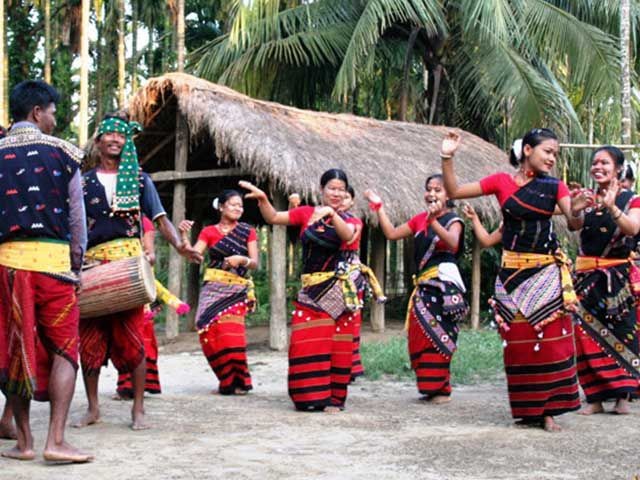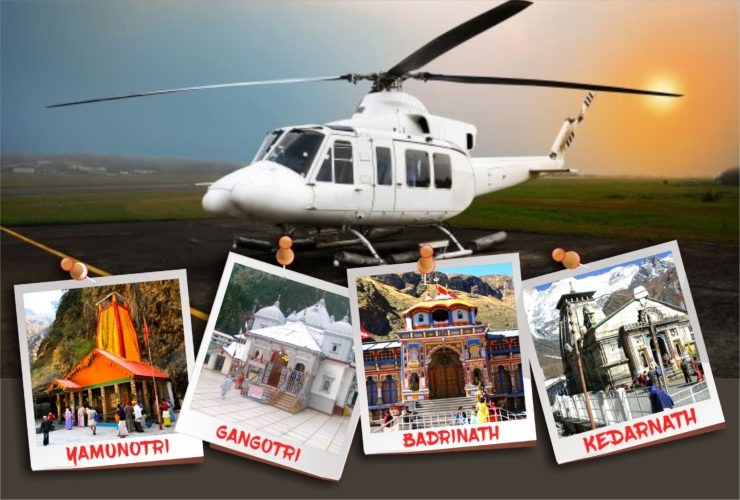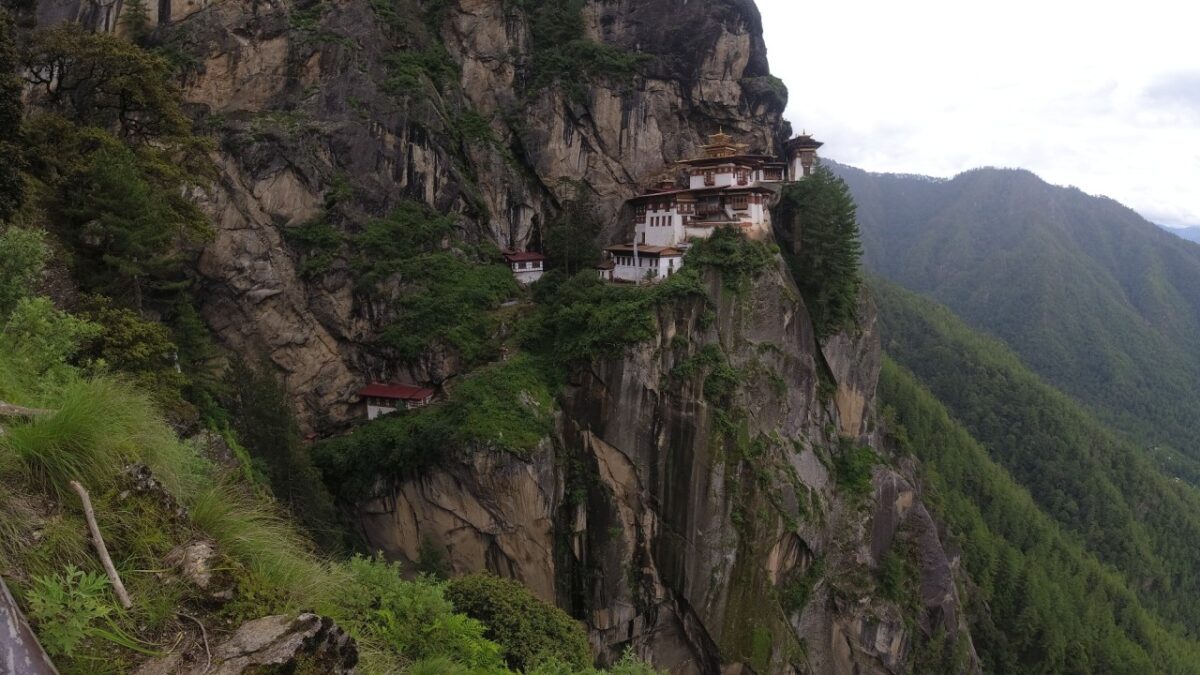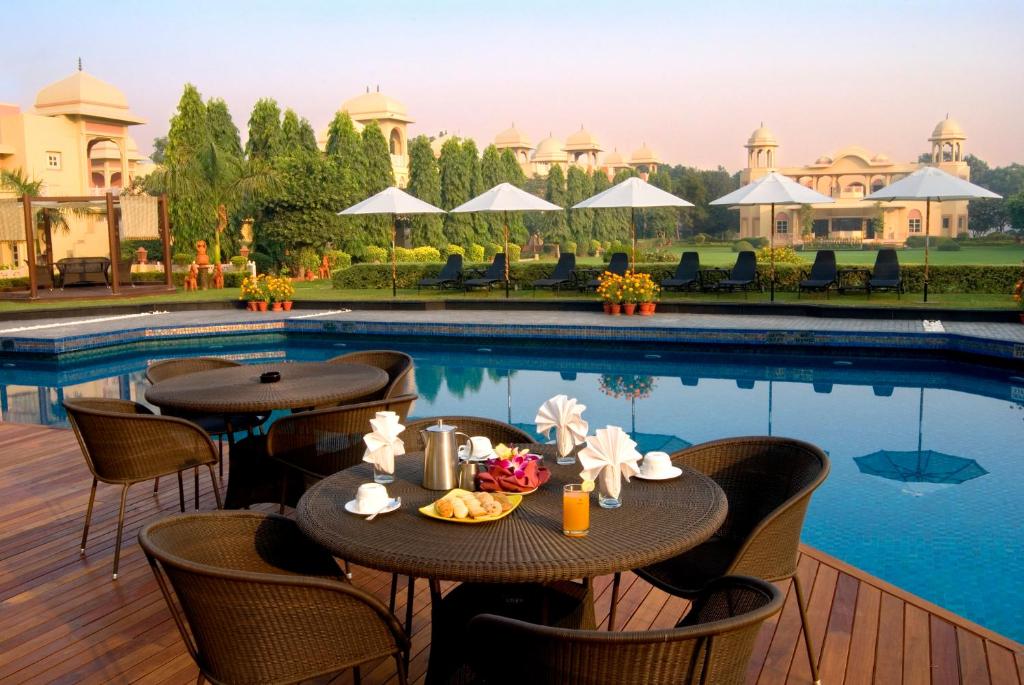About Rajasthan
Traveling to Rajasthan is an enchanting journey through a land of vibrant colors, rich history, and architectural marvels. With its majestic palaces, imposing forts, and intricate temples, Rajasthan transports you to an era of royalty and grandeur. From the bustling bazaars of Jaipur to the serene lakes of Udaipur and the golden sands of Jaisalmer, each city offers a unique tapestry of experiences. Whether you’re captivated by the intricacies of Rajput architecture, the flavors of Rajasthani cuisine, or the warmth of its people, Rajasthan beckons with a blend of culture, heritage, and landscapes that promise an unforgettable adventure through India’s royal heartland.
Best time to go for the Rajasthan Tour in India
The months from October to March (winter and spring) are generally the best time for a Rajasthan tour. The weather is comfortable, and you can make the most of your sightseeing experiences.
Top 10 Travel Destinations in Rajasthan
Rajasthan is a treasure trove of captivating destinations. Here are the top 10 travel destinations in Rajasthan:
- Jaipur: Known as the Pink City, Jaipur is the capital of Rajasthan and offers a vibrant mix of historical forts, palaces, markets, and cultural experiences. The Hawa Mahal, City Palace, and Amber Fort are must-visit attractions.
- Udaipur: Often referred to as the City of Lakes, Udaipur is renowned for its picturesque lakes, romantic palaces like the Lake Palace, and intricate marble architecture at the City Palace. Boat rides on Lake Pichola are a highlight.
- Jodhpur: The Blue City is famous for the majestic Mehrangarh Fort, perched on a hill, and its blue-painted houses. The bustling markets, Jaswant Thada, and the old city’s narrow streets are also worth exploring.
- Jaisalmer: Known as the Golden City, Jaisalmer boasts stunning sandstone architecture and the iconic Jaisalmer Fort. Visitors can experience desert life through camel safaris and enjoy mesmerizing sunsets.
- Pushkar: This holy city is famous for the Brahma Temple and the Pushkar Camel Fair. The sacred Pushkar Lake, surrounded by ghats, attracts pilgrims and travelers alike.
- Bikaner: Bikaner is characterized by its massive Junagarh Fort and unique red sandstone architecture. The city is also famous for its camel breeding farm and savory snacks.
- Ranthambore National Park: A haven for wildlife enthusiasts, this park offers the chance to spot tigers, leopards, and other wildlife amidst ancient ruins and picturesque landscapes.
- Chittorgarh: Home to the largest fort in India, Chittorgarh Fort, this destination is steeped in history and showcases Rajput valor. The Vijay Stambh and Kirti Stambh are significant monuments within the fort.
- Ajmer: Ajmer is known for the Ajmer Sharif Dargah, a Sufi shrine, and the tranquil Ana Sagar Lake. The city has a rich blend of religious and historical significance.
- Mount Abu: The only hill station in Rajasthan, Mount Abu offers a refreshing change with its cool climate, Dilwara Temples’ intricate marble carvings, and Nakki Lake’s serene surroundings.
These destinations collectively showcase Rajasthan’s royal history, vibrant culture, and diverse landscapes, making it an enchanting destination for travelers.
Popular Rajasthan Itinerary
Here’s a popular 7-day Rajasthan itinerary that covers some of the most iconic destinations in the state:
Day 1: Delhi to Jaipur
- Depart from Delhi to Jaipur (approximately 5 hours by road).
- Arrive in Jaipur and visit the Hawa Mahal and City Palace.
- Explore the local markets in the evening.
- Overnight stay in Jaipur.
Day 2: Jaipur Sightseeing
- Visit Amber Fort and enjoy an elephant or jeep ride.
- Explore Jal Mahal and Albert Hall Museum.
- Experience local Rajasthani cuisine.
- Overnight stay in Jaipur.
Day 3: Jaipur to Jodhpur
- Drive to Jodhpur (approximately 6 hours).
- Visit Mehrangarh Fort and Jaswant Thada.
- Explore the local markets in the evening.
- Overnight stay in Jodhpur.
Day 4: Jodhpur to Udaipur (via Ranakpur)
- Drive to Udaipur with a stop at Ranakpur Jain Temple (approximately 6 hours).
- Enjoy the stunning marble architecture of the temple.
- Reach Udaipur and take a boat ride on Lake Pichola.
- Overnight stay in Udaipur.
Day 5: Udaipur Sightseeing
- Visit City Palace and Saheliyon Ki Bari.
- Explore the Crystal Gallery and Vintage Car Museum.
- Wander through the colorful streets of Udaipur.
- Overnight stay in Udaipur.
Day 6: Udaipur to Pushkar
- Drive to Pushkar (approximately 4-5 hours).
- Visit the sacred Pushkar Lake and Brahma Temple.
- Experience the serene atmosphere of the city.
- Overnight stay in Pushkar.
Day 7: Pushkar to Delhi (Departure)
- Drive back to Delhi (approximately 7 hours).
- Depending on your departure time, you can explore local markets or relax.
- Departure from Delhi.
This itinerary covers major cities and attractions, offering a blend of historical sites, cultural experiences, and natural beauty.
Add Ons / Options if you have 4-5 more days
if you have 4-5 extra days to extend your Rajasthan tour, you can consider adding the following destinations to your itinerary:
Day 8: Ajmer and Pushkar
- Travel from Pushkar to Ajmer (approximately 30 minutes).
- Visit the Ajmer Sharif Dargah, a significant Sufi shrine.
- Return to Pushkar and explore any missed attractions or simply relax.
- Overnight stay in Pushkar.
Day 9: Ranthambore National Park
- Drive to Ranthambore (approximately 4-5 hours).
- Embark on a jungle safari in Ranthambore National Park, known for its tiger population.
- Experience the diverse wildlife and landscapes of the park.
- Overnight stay in Ranthambore.
Day 10: Ranthambore to Agra
- Drive from Ranthambore to Agra (approximately 5-6 hours).
- Visit the iconic Taj Mahal and Agra Fort.
- Explore the local markets and sample Agra’s culinary delights.
- Overnight stay in Agra.
Day 11: Agra to Delhi
- Drive back to Delhi (approximately 3-4 hours).
- Depending on your arrival time, you can visit any missed attractions in Delhi.
- Explore local markets or do some last-minute shopping.
- Overnight stay in Delhi.
These additional destinations will allow you to experience a wider variety of Rajasthan’s cultural, historical, and natural highlights, as well as include a visit to the iconic Taj Mahal in Agra.
Benefits of Hiring a Travel Professional?
Hiring a travel professional offers a wealth of benefits that streamline the travel planning process and enhance the overall experience. These experts possess in-depth destination knowledge, industry connections, and the expertise to curate personalized itineraries that align with travelers’ preferences and budgets. From securing the best deals on flights and accommodations to providing insider insights on local attractions and customs, travel professionals offer convenience, time savings, and peace of mind. Their ability to navigate complex logistics, provide emergency assistance, and offer personalized recommendations ensures that travelers can focus on enjoying their journey while maximizing their exploration of new destinations.
If you are looking for a reliable and trusted travel company to manage your tour then consider the following Best Rajasthan Operators in India.
List of Top 10 Rajasthan Tour Operators in India
Rajasthan Luxury Tours by Odin Tours
Odin Tours is a reputable travel agency known for crafting unforgettable and immersive travel experiences. They specialize in Rajasthan Luxury Tours. Whether it’s a cultural journey, an adventure in the great outdoors, or a luxurious escape, you can count on them for best deals. With a team of knowledgeable experts and a dedication to customer satisfaction, Odin Tours is your gateway to discovering the India’s wonders with ease and excitement.
Website: https://odintours.com/
Cox & Kings India
A leading travel company offering a wide range of Rajasthan tour packages, from luxury to budget options. They provide comprehensive travel services, including accommodation, transportation, and guided tours.
Website: www.coxandkings.com
Thomas Cook India
A renowned name in the travel industry, Thomas Cook offers diverse Rajasthan tour packages catering to different interests and budgets. Their packages cover major attractions and cultural experiences.
Website: www.thomascook.in
SOTC India
With a strong presence in Delhi, SOTC offers well-curated Rajasthan tours that encompass heritage sites, cultural experiences, and local cuisine. They provide various customizable packages.
Website: www.sotc.in
Swan Tours
Swan Tours specializes in tailor-made Rajasthan tours, allowing travelers to design their itineraries. They focus on personalized travel experiences.
Website: www.swantour.com
Indian Holidays Travel
Known for its Rajasthan heritage tours, Indian Holidays Travel offers insights into the rich history and architecture of the region, along with opportunities to engage with local communities.
Website: www.indianholidaystravel.com
Rajputana Tours
This operator offers both group and private Rajasthan tours, emphasizing authentic cultural interactions and off-the-beaten-path experiences.
Website: www.rajputanatours.in
Indian Memoirz
Indian Memoirz curates experiential Rajasthan tours, including activities like camel safaris, village visits, and interactions with local artisans. They focus on showcasing the essence of rural Rajasthan.
Website: www.indianmemoirz.com
Travelogy India
Specializing in luxury Rajasthan tours, Travelogy India offers opulent experiences that encompass royal palaces, luxury trains, and exclusive cultural events.
Website: www.travelogyindia.com
Optima Travels
Optima Travels provides a range of Rajasthan tour packages with a focus on unique experiences, such as hot air balloon rides over Jaipur and wildlife safaris.
Website: www.optimatravels.com
FAQs related to Rajasthan Tours from Delhi
Q: What is the best time to visit Rajasthan on a tour from Delhi?
A: The best time to visit Rajasthan from Delhi is during the winter months, from October to March, when the weather is more pleasant and suitable for exploring the region’s attractions.
Q: How far is Rajasthan from Delhi, and what are the transportation options?
A: The distance between Delhi and Rajasthan varies depending on the specific destination within Rajasthan. Generally, it’s around 250 to 400 kilometers. You can choose between trains, buses, and flights for transportation.
Q: What are some must-visit destinations in Rajasthan on a tour from Delhi?
A: Rajasthan offers numerous must-visit destinations, including Jaipur (the Pink City), Udaipur (the City of Lakes), Jodhpur (the Blue City), Jaisalmer (the Golden City), and Pushkar (known for its camel fair and temples).
Q: What are the popular cultural experiences to have in Rajasthan?
A: In Rajasthan, you can enjoy cultural experiences such as attending traditional folk dance and music performances, participating in camel safaris, exploring local markets, and witnessing intricate Rajasthani art and craft demonstrations.
Q: Are there luxury tour options available for exploring Rajasthan from Delhi?
A: Yes, there are luxury tour options available that offer royal experiences, including stays in heritage hotels and palaces, luxury train journeys like the Palace on Wheels, and personalized services throughout the trip.
Q: What should I pack for a Rajasthan tour from Delhi?
A: Pack light and comfortable clothing suitable for both warm days and cooler evenings. Don’t forget to bring sunscreen, sunglasses, a hat, comfortable walking shoes, and any specific items you might need for activities like camel rides.
Q: What are the famous festivals of Rajasthan that I might experience during my tour?
A: Rajasthan is known for its vibrant festivals like Diwali, Holi, Pushkar Camel Fair, and the Jaipur Literature Festival. These festivals provide unique insights into the region’s culture, traditions, and celebrations.
Q: Is it necessary to book a guided tour for exploring Rajasthan, or can I explore on my own?
A: While exploring Rajasthan on your own is possible, booking a guided tour can enhance your experience by providing you with local insights, historical context, and convenient transportation between attractions.
Q: What are the top historical sites to visit in Rajasthan?
A: Rajasthan boasts a rich history, and some top historical sites to visit include Amber Fort, Mehrangarh Fort, Hawa Mahal, City Palace, and Chittorgarh Fort, each offering a glimpse into the region’s royal past.
Q: How can I experience the desert in Rajasthan, and is it safe?
A: To experience the desert, you can visit destinations like Jaisalmer and take camel safaris or jeep rides. These experiences are generally safe when organized by reputable tour operators who prioritize safety and comfort for travelers.

